- Holy Crap! What Do I Do Now?!
- Selling Your Artwork On Social Media
- Selling Your Artwork on Consignment
- Selling Your Artwork Wholesale
Selling your artwork at wholesale is probably a topic that most artists don’t even consider. Some artists are against selling anything other than their originals; they’re the purists, they want to earn like they did “in the old days”. Some of them may even look down on those of us who make our art work for us multiple times. Some artists are interested in selling prints and other things on their own, but for any number of reasons haven’t thought about or shied away from wholesale.
Things to Consider and Questions to Answer
First, lets clear away some confusion and make sure you understand the most important thing about selling at wholesale. It isn’t for the faint of heart and it isn’t for passive income-seekers. You have to foster and maintain relationships with retailers who will carry your work. Even more so than with consignment shop owners.
You’ll be making the same product for about half the income.
It’s typical to offer wholesale products at 50% less than the retail price. This leaves a good margin for shops to earn a profit, while having to take on additional expenses like storing and advertising. I’ve seen some offer less than 50% and some more, but the general rule is that wholesale is half of retail. This is also important when pricing your products, which I’ll discuss another time.
Wholesale Minimums and terms
This consideration is more subjective than the pricing. I recommend minimums to ensure orders are large enough to be worth your time. Also consider that you might be able to get the supplies to fill a larger order at a discount, and that typically wholesale orders allow for more productive making through the use of “chunking” or “batching” the process.
Terms are how you want to be paid. When researching these, you’ve probably seen things Net30 or Net90, which basically mean the buyer has 30 or 90 days to pay the invoice, but you’re filling the order as your normally would. Personally, I conduct my wholesale transactions like my retail ones; money at time of purchase.
I’m passionate about sharing valuable insights on my website. Your $3 donation will help me cover hosting expenses. Please donate now!👇
What are you going to sell and to whom?
Just because you have 200 different designs or that you make prints, coffee mugs, coasters, and t-shirts doesn’t mean you’ll necessarily want to offer them all at wholesale. The nice thing here is that you’re in control of it, you get to decide. There are so things that just might not make financial sense to offer wholesale. The pricing rule is that materials + labor = cost. Cost x 2 = Wholesale. Wholesale x2 = Retail. 99.9% of the time as a maker, this is the best formula to use. Far too many makers, however, use the wholesale price as retail, and then later decide they want to offer things at wholesale. The lesson here is get your pricing situated early in the game, even if you don’t think you’ll even want to sell at wholesale.
My Experiences
I’ve had generally positive experiences with wholesaling my artwork. Many of the items I sell have a cost to me which makes them impractical to offer at wholesale, so I’ve limited it to just two types of items. I have order minimums, which I’ve been told are fair. I only wholesale my work in a couple of formats. This is mainly because I have a production partner making many of the items and I can’t offer a good retail price with what they charge. The items I make myself follow the formula above so I can offer those at wholesale. As a bonus, following that formula also sets up your catalog to work with consignment shops as well, which I talk about here.
Where to Start
You know I’m fan of lists if you’ve read more than a couple of articles on this site. This time is no different; you’re going to need a list. Actually, the first thing you’re going to do is go shopping! You’re going to shop with your eyes and visit every store you think your products would do well. Pay attention to potential competition, but don’t let that eliminate those shops as options. What you’re really looking for here is the “vibe”. Does this store, the people shopping there, the appearance of the shop, any advertising and staff interactions all feel like they go well with your stuff, and with your brand. You’re not being snobby if you say “no”, you’re being discerning. It’s important to know the difference.
You’re going to enjoy wholesaling with shops and owners who mesh with your brand sensibilities. Those shops, those owners, they’ll be part of your “good vibe tribe”. After every shop, take a few minutes in the parking lot outside to jot down as much information as you can. The “vibe”, the good things you noticed, the bad, is it a fit for your biz? Once you’ve done the shopping, pick the top five places from your notes and make the list.
Focus
Ignore all the others for now, these top five are the ones you feel represent your best opportunity for wholesale orders, and more importantly, relationships. These are your potential good vibe tribe. Trust me, once these first few are cultivated, running smooth, while being genuine “good vibe tribe” accounts, the rest will be easier. There’s a good chance that the others will know who you are, and might even seek you out. Don’t feel obligated to take on more accounts, never stretch yourself too thin, but always be ready for growth, even scary growth.
How you approach them is up to you. It could be a phone call, it could be an email with a wholesale packet PDF, or, like a savvy friend of mine who makes beautiful clear gel candles, you could make a small candle for each shop and take it in for the owner with a print out of that clever wholesale packet. Speaking of…
Price Sheet Magic
While you may be tempted to develop a spreadsheet with your pricing, or a simple word doc with some thumbnails and text, I’m going to ask that you instead consider taking some time with this. As important as you’ve been taught your business card is, this wholesale packet (sometimes called a catalog) is far more important, and valuable! Here are just a few eye-catching example pages. Notice that you feel the “vibe” just by flipping through, that’s important! Also notice that the brand voice is present, but that it doesn’t get in the way. The information presented is straight forward and accessible. The Pepper Mill Shop is doing this right!
Artists support artists. Your $3 donation will help me cover hosting expenses. Please donate now!👇
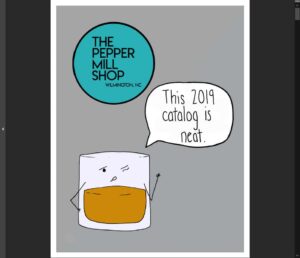
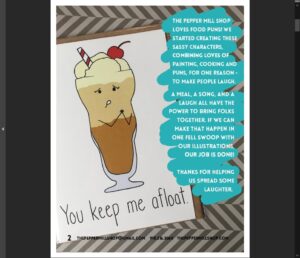
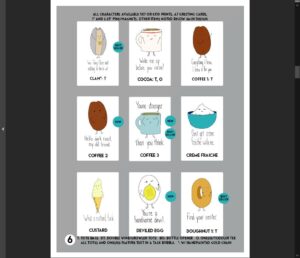
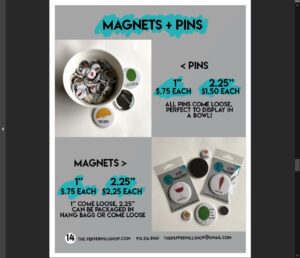
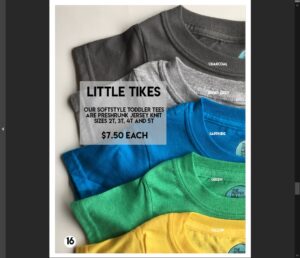
Wholesale in the 21st Century
If you want to skip the local “warm and fuzzy” route and go straight to the online thing, then you’re in luck! There are several excellent websites that while often difficult to get approved for, are fantastic ways to get retailers connected with your products! I’ll point you to the two I’ve heard the best results from. These are sites retailers go to get their products:
- Faire.com – More focused on small artisan brands with more handmade and artisan-scale production. (affiliate link that I get paid if you sign up through)
- Tundra.com – A wider brand offering, but also a larger retailer buyer base, from what I can tell.
Did I miss anything? Do you have questions? Leave a comment here or start a discussion on the Facebook page!


Leave a Reply